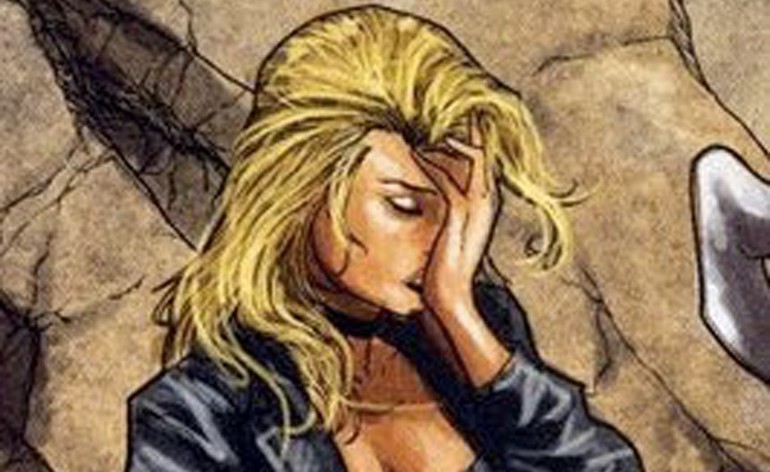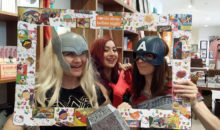Boys and Toys Franchising Make For Better Superhero Cartoons?
I’m not going to say anything new. In fact, there is nothing within the conversation between Kevin Smith and Paul Dini that is even remotely new. Paul Dini is the producer and writer of Batman: The Animated Series, and Tiny Toon Adventures as well as a script contributor to Animaniacs, Freakazoid, Justice League, Justice League Unlimited among other cartoon programs that many of us grew up with (myself included) and shaped our formative geek interests for all the years to come.
So for him to basically state that superhero cartoon executives have been cancelling story-driven programs with three-dimensional characters of both genders for the sake of merchandising toys to young boys is just… it’s not surprising. But it is infuriating.
According to an excerpt of the transcript between Smith and Dini on Lauren Davis’ i09 article Paul Dini: Superhero cartoon execs don’t want largely female audiences, instead of taking advantage of an opportunity created by particular cartoon programs that attract not only young boys and girls, but adult audiences, and diversifying their merchandise these executives apparently are “uncomfortable” with taking a chance on something so “uncertain” and want to fall back on their mainstays of boys and toys and more simplistic programs.
The sad thing is, logically it makes sense from a market and industry perspective. The industry, in this case the superhero industry encompassing comics, toys, television shows and commercial products, cares less about story and inclusivity and more about steady, tried, tested and true income-making. From the perspective of this particular mindset, diversifying or attempting to add new products to something that already “works” would be tantamount to taking risks or placing bets on a chance that may not pan out. It is so much easier to appeal to a common denominator, to older and more entrenched social stereotypes and biases, than it is to attempt to make something new or innovative and hope that you can find, or develop, a large enough audience to keep making you the same amount of income that is expected of you.
This narrow perspective has been around for a very long time and while it definitely has a “if it ain’t broke, don’t fix it” mentality, with an added “there’s no need to reinvent the wheel” that seems to serve businesses well, there are two matters to consider. First of all, this isn’t good business sense. The fact of the matter is that there is a substantial audience of boys and girls out there that want good stories and characters to relate to. By ignoring this audience, not only do these executives and the companies they manage lose out on potential pay-offs, but eventually the work they produce will become one-dimensional and stagnant: to the point where they will be so interchangeable with other shows that no one will bother watching them, never mind purchase any products they have to offer. Of course, I could be both underestimating and overestimating the situation. There are always collectors and an individual can be trained over time to accept a great deal of limiting circumstances.
And this leads to my second point. The industry is a business and despite the wonder of creation and art that many of us appreciate, it will always see it as a commodity: one that either has the potential to make money, or doesn’t. It is the culture of the audience, of the customers, our culture, that is the issue. Many of the programs that Dini helped create and worked on originated in the nineties all the way into the mid-early aughts. Perhaps it is just nostalgia on my part, but an attitude with regards to gender and how it was depicted in the programming of that time slowly began to change into whatever it is now. I’m sure there are many theories about this, and I know that even the 90s were not perfect with regards to how they represented gender equality. You can even argue that this determining factor in how many toys can be sold to boys existed even then and perhaps had something of a role in the end of the cartoons that existed back in the day. To be honest, I don’t really know.
But I will say is this, the possibility that executives of superhero cartoons cancel or pass up on shows because it is easier to fall back on long-held and largely unexamined prejudices, that boys given vapid programming are easier to sell a certain set of toys to, that girls don’t or can’t buy the same toys as boys, that you can’t make something more creative to make them into life-long fans and buy your products is just plain laziness, and it is a complacency that has been in our cultural attitudes for some time. The fact that this is a factor that determines our creativity, its expression and what we teach our children is not only laziness, it is even more plainly ridiculous.
There is always this debate as to whether or not the media influences us, or if we influence it. This is an issue that obviously applies to more than just the cartoon superhero industry (certainly the comics and film industries have their own tendencies to override creativity and innovation for a sense of surer profit) but I would like to think that we as geeks, nerds, or what have-you can somehow influence the media to give us the quality that we want for ourselves and our children. I obviously don’t know the how of it, but I think what it all comes down to is the very thing that is lacking, or even discouraged by certain forces in this world.
It’s called imagination. And not attempting to reinvent the wheel, in this case, could grind the former into dust. You can do better than this. We can do better.
This whole article is just stating the obvious. I just wish I didn’t have to do that. For more on Kevin Smith’s and Paul Dini’s discussion, listen to the entire podcast at SModcast Fat Man On Batman #052: Paul Dini: Shadow of the Shadow of the Bat.








